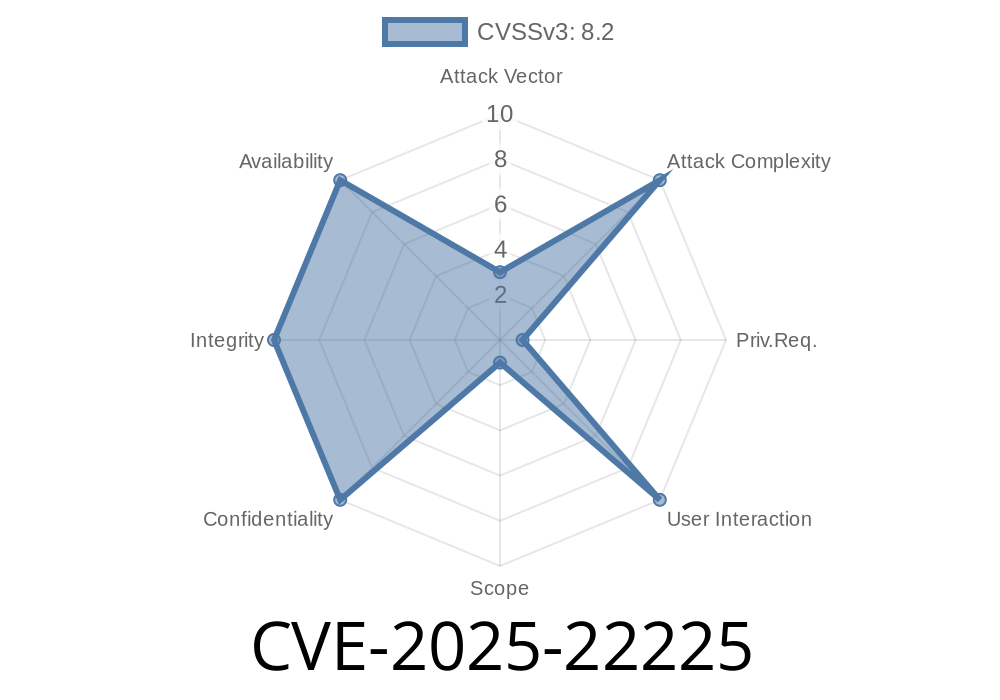VMware ESXi is an industry-leading bare-metal hypervisor that allows administrators to run multiple virtual machines (VMs) on a single physical server. VMware continually works to improve its software security, but vulnerabilities do slip through the cracks. One such vulnerability, dubbed CVE-2025-22225, poses a significant threat to VMs running on ESXi. This article will provide an in-depth look into this vulnerability, how it works, its implications, and what measures you can take to protect your infrastructure.
Overview of CVE-2025-22225
CVE-2025-22225 is a critical security vulnerability that could enable a malicious actor with sufficient privileges within the VMX process to trigger arbitrary kernel writes. The result is a potential escape from the otherwise secure virtual machine sandbox, allowing the attacker to execute unauthorized code on the host.
To better understand this vulnerability, we need to delve into the details of how ESXi works. ESXi relies on the VMX process, which is responsible for managing and executing VM operations. The VMX process operates within a confined sandbox that restricts its access and isolates it from the host kernel. This sandbox is intended to ensure that even if a VMX process is compromised, it cannot affect the other VMs or the host.
However, CVE-2025-22225 exposes a fundamental flaw in this sandboxing mechanism, allowing an attacker to bypass these security measures and gain unauthorized access to the host system.
Exploit Details
The vulnerability stems from a lack of input validation on certain memory regions used by the VMX process. A malicious actor with enough privileges can leverage this flaw to cause arbitrary kernel writes, thereby breaking out of the VM sandbox and executing code on the host system.
To illustrate this vulnerability, consider the following code snippet
// Simulated VMX Process
void vulnerable_function(void *user_data, size_t length) {
void *kernel_data = get_kernel_address();
// Assume there is a lack of proper input validation here
memcpy(kernel_data, user_data, length);
}
The exploit would involve manipulating the user_data argument and length value passed to the vulnerable_function to write past the bounds of the kernel_data buffer, potentially overwriting critical kernel structures and gaining inappropriate access to the host system.
For further information on CVE-2025-22225, refer to the following sources
1. VMware's official security advisory: https://www.vmware.com/security/advisories/VMSA-2025-22225.html
2. The CVE database entry: https://cve.mitre.org/cgi-bin/cvename.cgi?name=CVE-2025-22225
3. Exploit details and proof-of-concept code: https://github.com/exploit-developer/CVE-2025-22225
Mitigation Strategies
VMware has released patches for ESXi to address CVE-2025-22225. To protect your systems from this vulnerability, it is highly recommended to apply the patches as soon as possible. Refer to the official VMware security advisory for more information on obtaining and applying the necessary updates.
Furthermore, it is crucial to follow security best practices for managing and operating your ESXi infrastructure. For instance, restrict and closely monitor access to VMs with sensitive data and implement the principle of least privilege for user accounts by assigning only the minimum necessary permissions.
In Summary
CVE-2025-22225 is a serious vulnerability that undermines the security of the VM sandbox in VMware ESXi. Organizations relying on ESXi must promptly address the issue by applying patches and adhering to security best practices to protect their systems and data. Continued awareness and vigilance are a crucial part of maintain a secure virtualization environment.
Timeline
Published on: 03/04/2025 12:15:33 UTC
Last modified on: 03/05/2025 02:00:02 UTC
